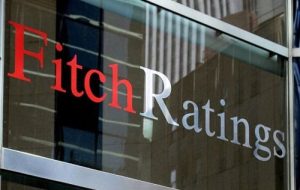Borrowing costs to drop as policy rate cut to 25

The Bank of Ghana (BoG) has cut its benchmark monetary policy rate by 300 basis points, reducing it from 28 to 25%— the steepest drop in several years.
Announcing the decision at a press briefing in Accra, Governor Dr. Johnson Asiama, who also chairs the Monetary Policy Committee (MPC), said the move was driven by continued disinflation and improving macroeconomic stability.

“The MPC, by a majority decision, voted to lower the monetary policy rate by 300 basis points to 25%. Looking ahead, the Committee will continue to assess incoming data and likely reduce the policy rate further should the disinflation trend continue,” Dr. Asiama said.
Commercial bank lending rates expected to drop
The significant reduction in the policy rate is expected to have a direct impact on borrowing costs across the economy. Commercial banks typically use the policy rate as a benchmark for setting interest rates on loans and credit facilities.
With the policy rate now lowered by three percentage points, banks are likely to respond by reducing their own lending rates — a move that will be welcomed by households, small and medium-sized enterprises (SMEs), and the broader private sector.
“This is good news for borrowers,” said a senior economist at an Accra-based investment bank. “We expect to see a gradual easing in commercial bank lending rates, possibly by 100 to 200 basis points in the coming weeks, especially for well-rated customers.”
Lower interest rates would make it cheaper for businesses to finance operations and expansions, while households could benefit from more affordable consumer loans and mortgages.
Central Bank balancing growth with caution
Dr. Asiama stressed that despite the aggressive cut, the central bank remains committed to its price stability mandate and will proceed cautiously to avoid undoing recent gains.
“We are maintaining a careful balance. While inflation has decelerated to 13.7% as of July 2025 — down from over 50% in late 2022 — there are still risks to the outlook,” he warned.
Those risks, he noted, include ongoing global trade tensions that could disrupt supply chains and possible upward adjustments in electricity and water tariffs.
However, the BoG believes these risks will be contained through tight monetary conditions and continued fiscal discipline.
A shift from tightening to easing
The rate cut marks a turning point in the Bank of Ghana’s monetary policy stance after nearly two years of aggressive tightening aimed at taming runaway inflation and stabilizing the cedi.
As inflation surged past 50% in 2022, the central bank hiked the policy rate multiple times, reaching a peak of 30 percent in early 2024.
With inflation now more than halved and the economy showing signs of resilience, the BoG has begun to ease monetary conditions — a trend that analysts say could continue if inflation remains on a downward trajectory.
Implications for the economy
The MPC’s latest move is expected to stimulate growth in key sectors such as construction, manufacturing, and agriculture — all of which are sensitive to borrowing costs.
Lower interest rates may also drive greater consumer spending and business investment, helping to create jobs and raise incomes.
Investors and markets react
Financial markets responded positively to the BoG’s announcement, with the Ghana Stock Exchange recording modest gains amid expectations of improved corporate earnings and liquidity.
Bond traders also noted a slight rally in domestic debt instruments, as lower rates reduce the cost of government borrowing.
However, currency traders are watching closely to see if the policy easing could put downward pressure on the cedi.
So far, the local currency has remained stable, supported by strong foreign exchange reserves and export earnings from gold, cocoa, and oil.
What next?
The MPC is scheduled to meet again in September 2025. Between now and then, the central bank will monitor inflation, exchange rate dynamics, and fiscal performance to determine whether additional rate cuts are warranted.
If inflation continues to fall and fiscal discipline holds, analysts believe the BoG could reduce the policy rate further, potentially to 23% percent by the end of the year.
The BoG’s decision to cut the policy rate to 25% marks a significant shift in the country’s monetary policy direction.
It signals growing confidence in economic fundamentals and is expected to ease lending rates from commercial banks, providing much-needed relief for businesses and consumers alike.
However, the central bank remains cautious, with a firm eye on inflation risks and global uncertainties.


